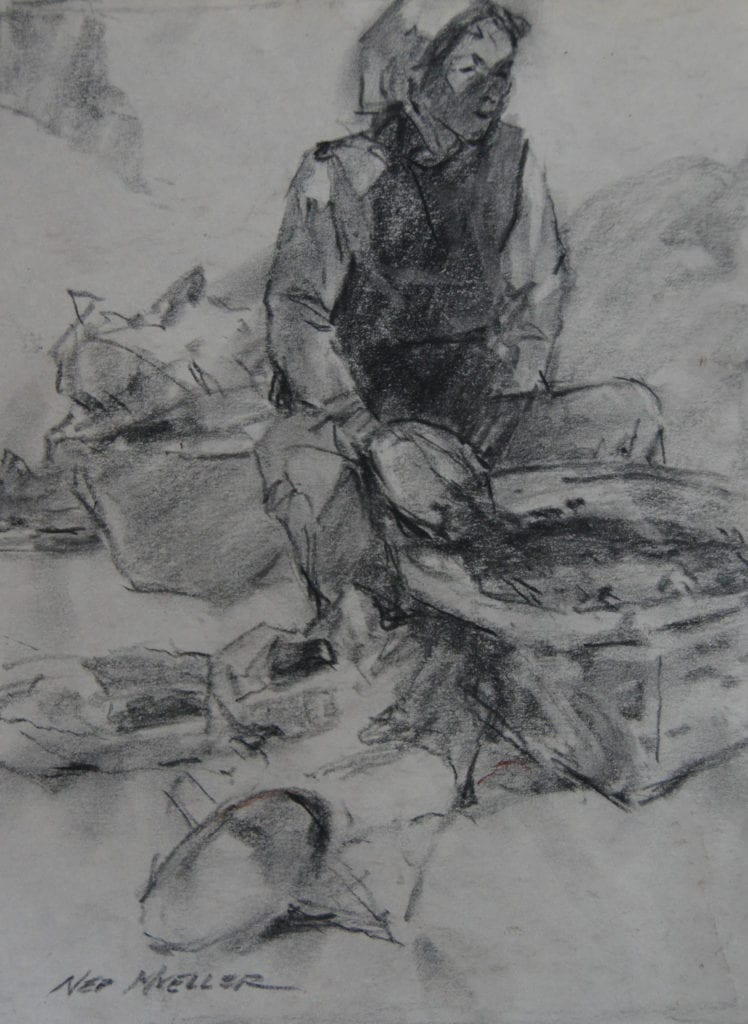
“Yunnan Market” Value study 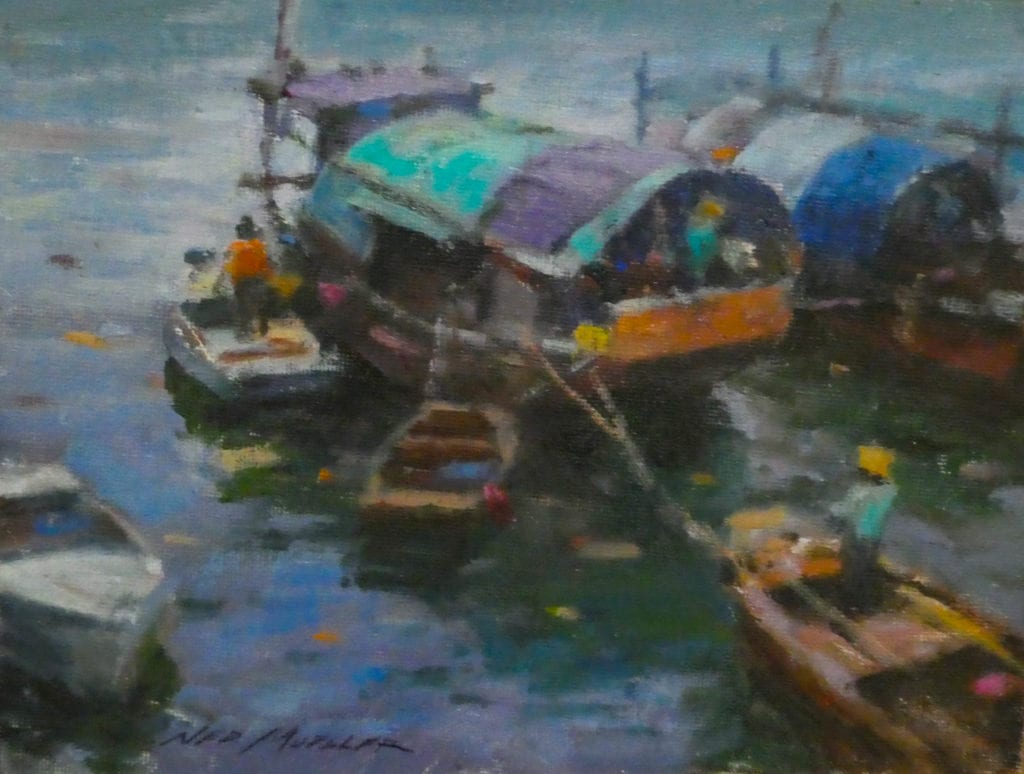
“Aberdeen Harbor-Hong Kong” Color study
We all would love to have fewer paintings that just don’t seem to work for us. I know I do. I’ve been drawing and painting for over 75 years and I certainly am trying to save some time away from the clunkers!
I have found one fairly good way for me is to do value and/or color studies and understand it is not for everyone. I was trained as an Illustrator in art school and we were given assignments that involved doing value and/or color studies, often having to do multiple ideas or designs for the same assignment. It really made sense as we often had to work with art directors who would give us an assignment and make sure we were both on the same page.
We would have to submit small studies that the art director would look at and advise us what we would have to do or not do (usually to do) to communicate or illustrate the story, part of the story or if an advertisement, create the right visual message. There was often quite a bit of money at stake so that commercial process was more of a necessity!
I have carried some of that habit into my fine artwork, particularly with my studio and figure painting where I will work out a composition or design with multiple figures, accessories, animals, etc. They are often telling a story and so I will use a variety of photos that I will try and orchestrate into a painting like the examples here.
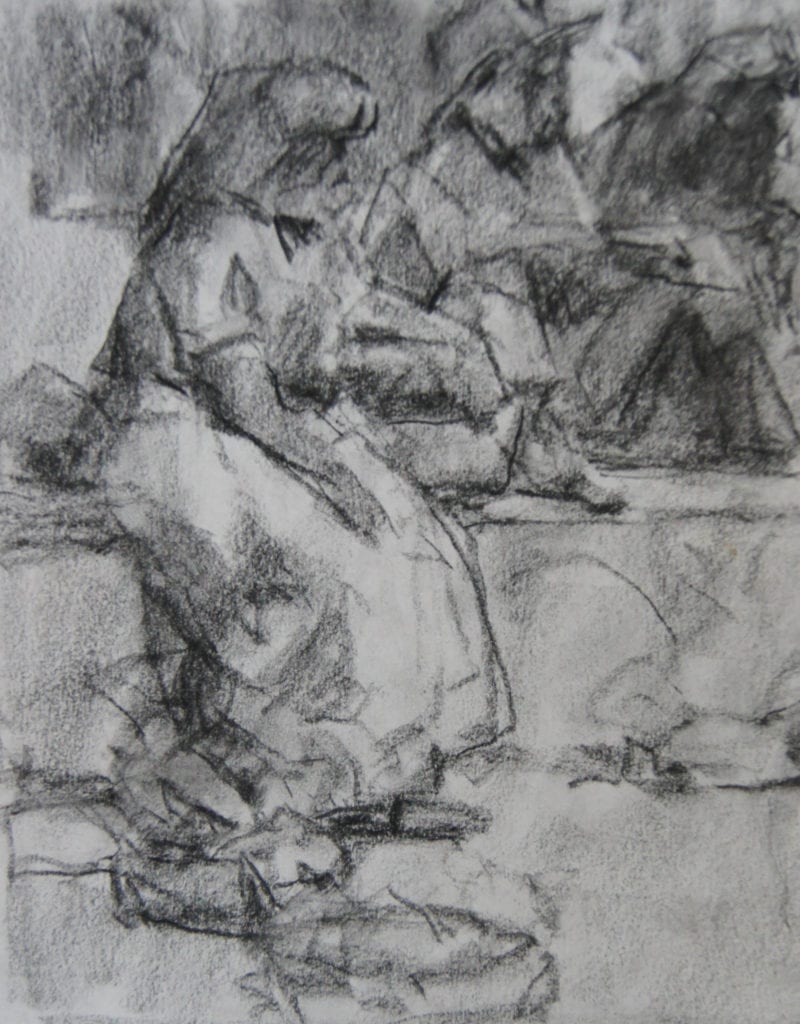
“Oaxaca Market” Value study 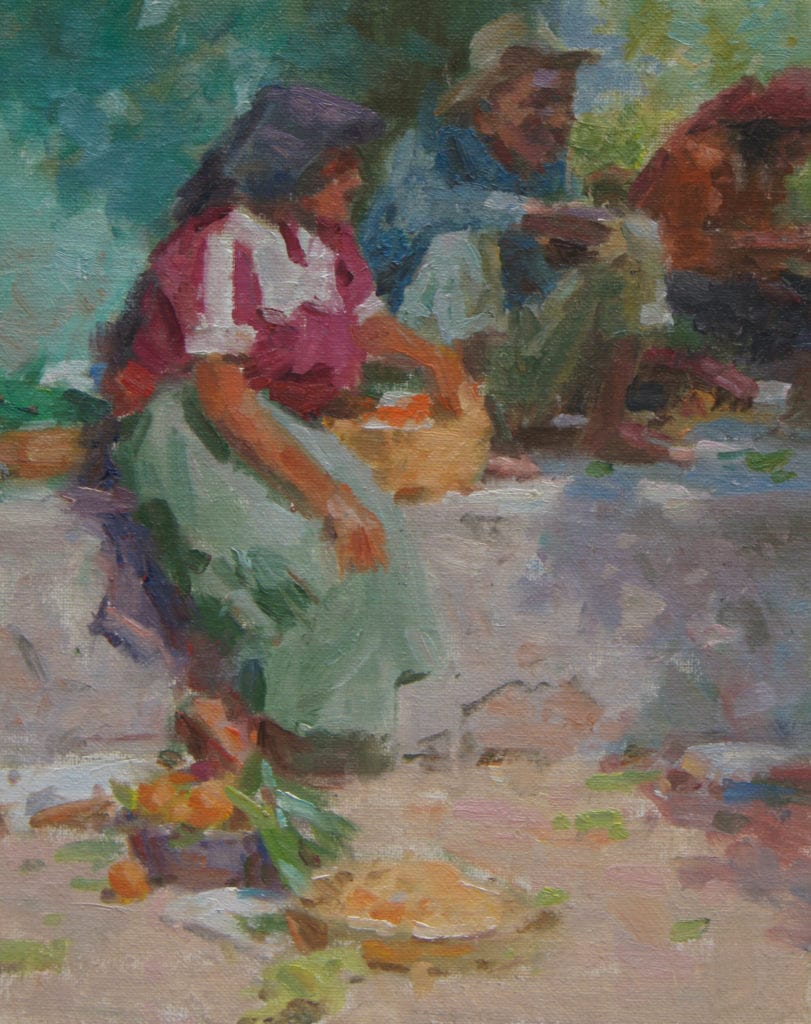
“Oaxaca Market” Color study
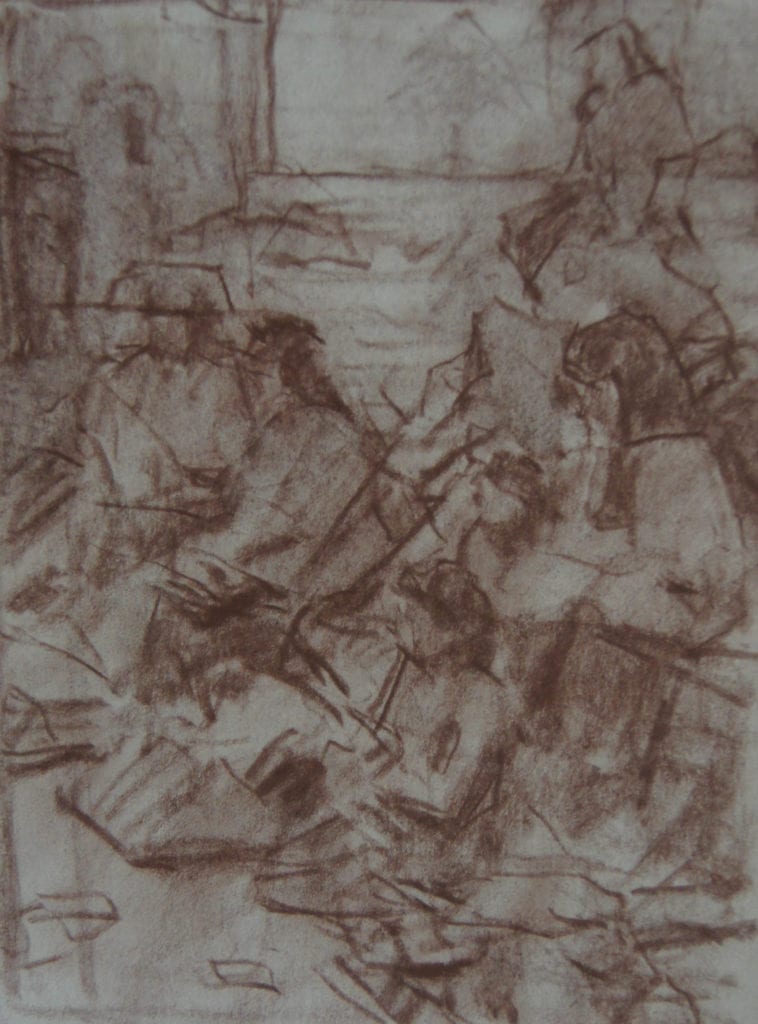
“Guatemala Market” Value study 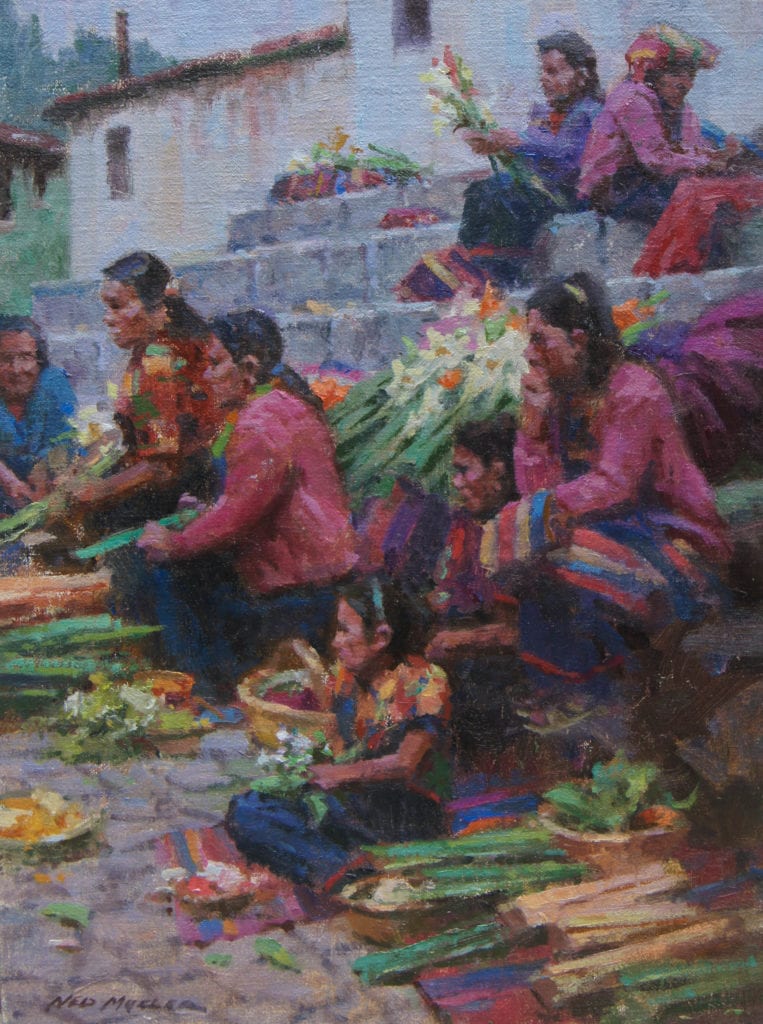
“Guatemala Market” Color study
I will also do the same with some of my landscapes where I will usually have one main photo reference and use other photo references or my own memory bank – things that I think will help make the painting better, such as fruits, flowers, baskets, horses, trees, streams, ground cover, etc.
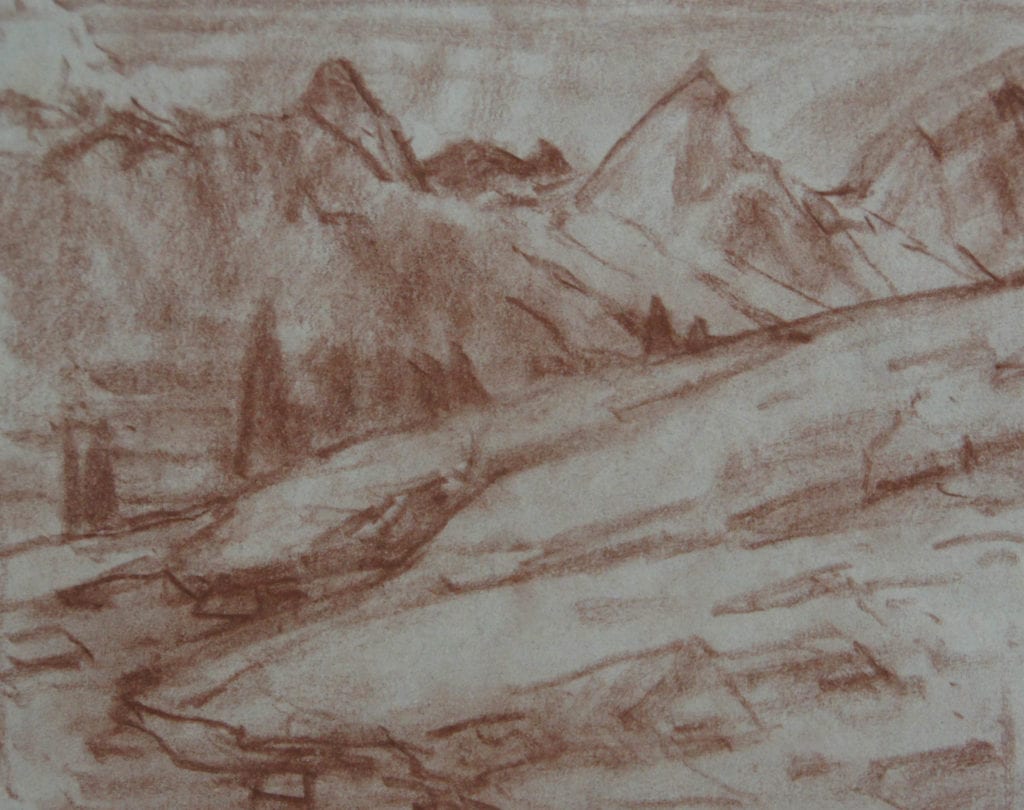
“Minaret Range” Value study 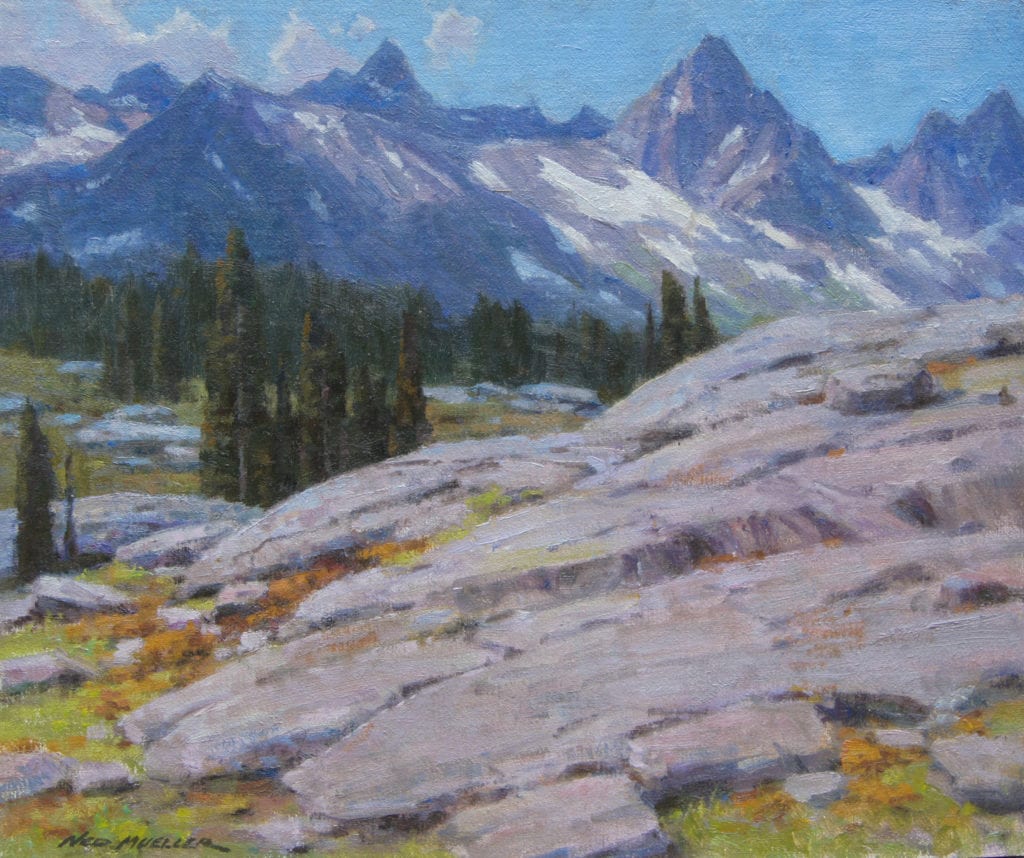
“Minaret Range” Color study
The main thing in the smaller value studies is to get something down so that I can see and think about what I need to do to hopefully make it work better. Usually, with the value studies, it involves making shapes larger or smaller, darker or lighter, edges sharper or duller and adding or subtracting objects, be it figures, dogs, bushes, streams or whatever might make it a better painting. In the case of a color study, the same issues apply. But think more of brighter or duller color and color harmony. I like to tell my students that the old Master’s worked in values for FOUR YEARS. When I was in art school it was for two years, and our first color assignment was three white eggs on a pale blue plate! It is hard to get students to do value studies for two days, let alone two years, but if they are in any way serious about their work, they understand how important it is to master that part of the process! In regard to doing color studies, I like to tell students that a fairly accurate definition of a good painting is “an interesting or compelling arrangement of shapes, colors, edges, and texture”. This definition applies for classical to abstract work. And doing smaller value or color studies is a more efficient process to learn all of that, not the only way, but a pretty good way to get a handle of things!
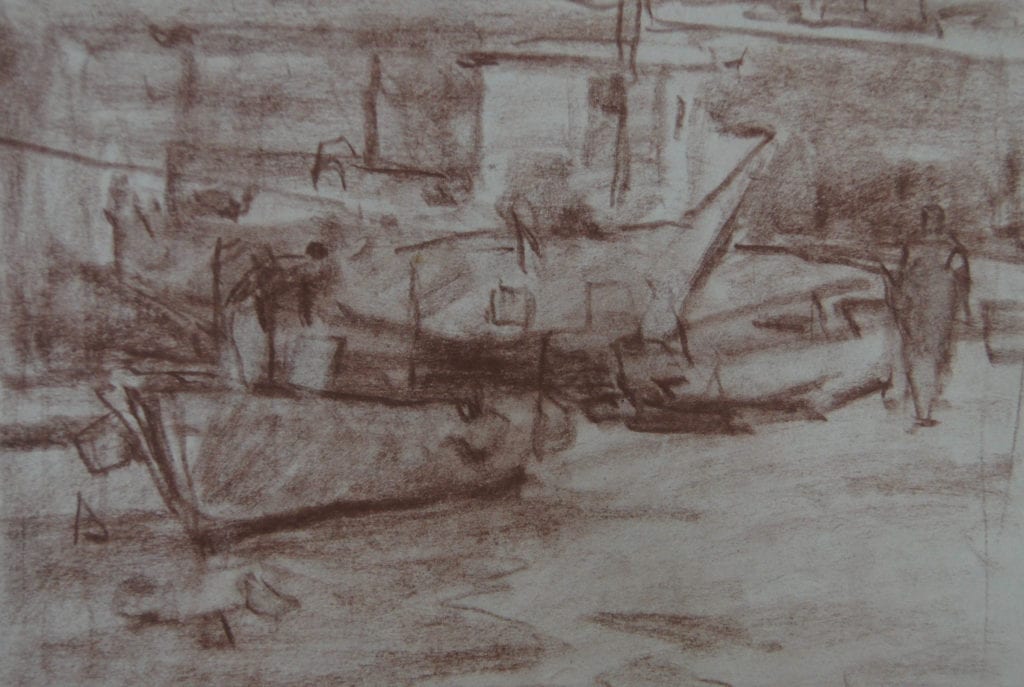
“Balbriggan Harbor” Value study 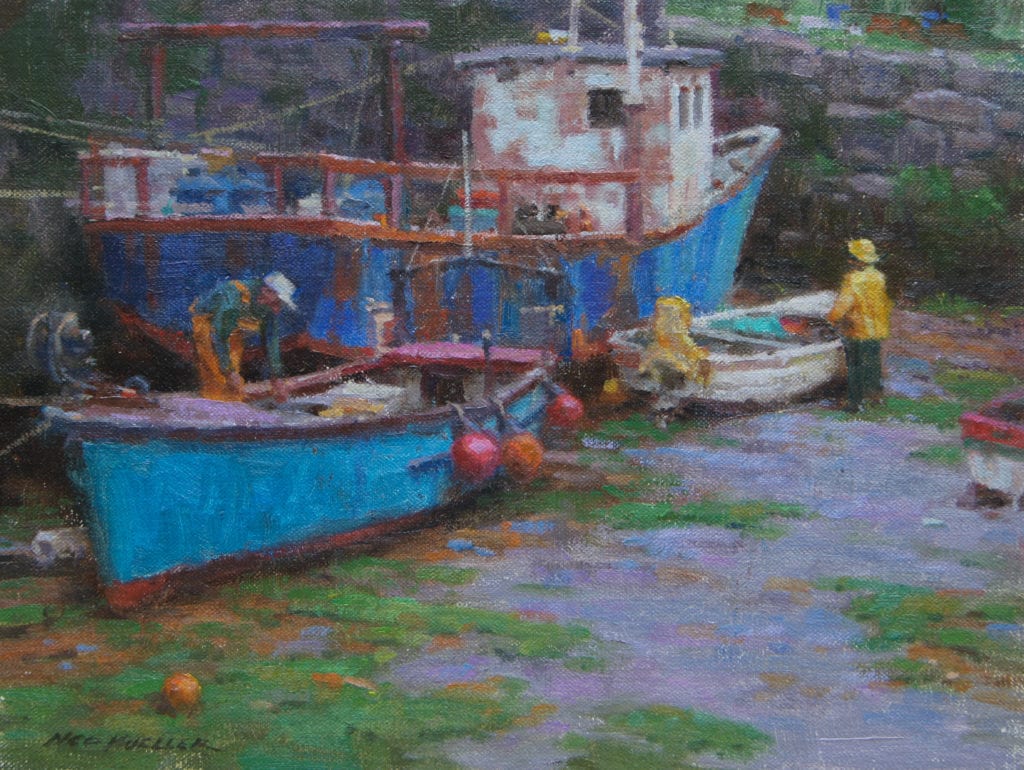
“Balbriggan Harbor” Color study
Usually, the concept of doing studies is associated with more thoughtful studio work. But they certainly can be applied to other forms of painting, such as plein air where immediacy can really be a moving force as often one is in a situation of the unfamiliarity of where and when to go someplace. Just taking a few minutes to get something down visually can clarify some thoughts, feelings, and concepts that may lead to a more successful effort. I have a small sketchpad that I often just scribble down some tones and shapes that helps to clarify some ideas of a scene that has piqued my interest. At least I am not diving in cold turkey and hoping the heck it will all work out as I go along. Yes, sometimes that works. There is much to be said for spontaneity and a quick study guide does not have to inhibit that. Rough sketches at least gave me something of a starting guide with value and shape relationships to contemplate for better or for worse. Usually, we are in a hurry to get going outside and with the first quick sketch the temptation is to say “that’s good enough”, but I have too often gone ahead and had to live with my regrets for not being more patient!
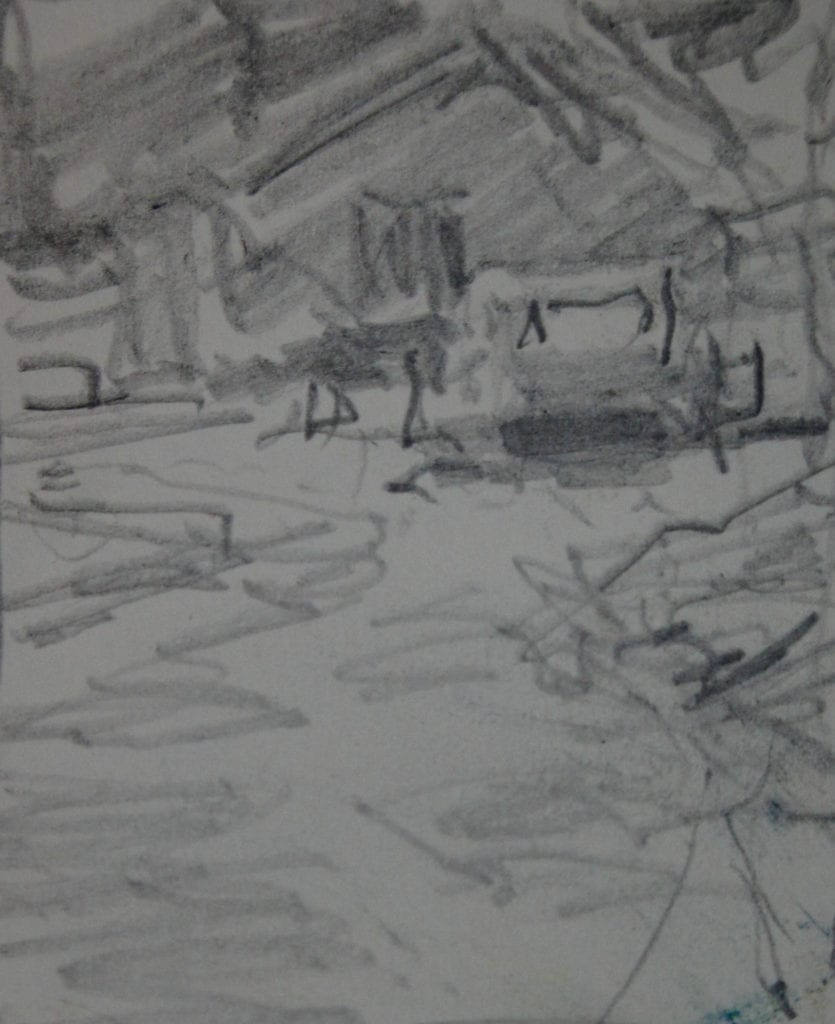
“Beauty and the Beast” Value study 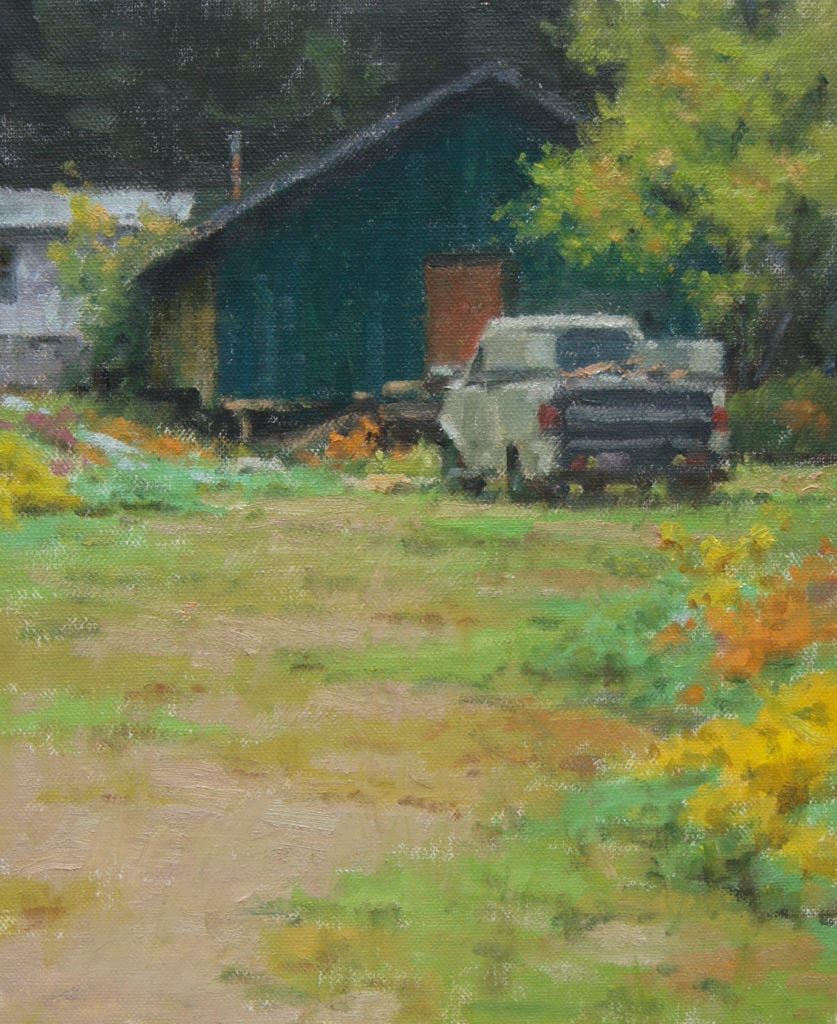
“Beauty and the Beast” Plein Air
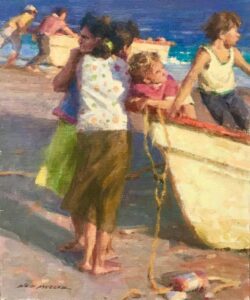
When working in the studio and having more time to think about what and how I am going to paint a picture, I will sit down and do around 10 to 15 value studies. Working from photos and my own memory bank, I develop some concepts and then pick out around 6 or 7 that I like best and do color studies of them. The idea here is to find some ideas that I really like out of many and spend my valuable time on something I am excited about. The one problem with that is that I have played the ballgame twice already, and as the process of creating a picture is what I enjoy the most I lose a bit of an edge in doing a larger piece. Now, I often will just do a value or color study and still have the challenge of seeing if I can make it better on a larger scale. I usually make the color studies around 6″x8″ or 8″x10″, but sometimes larger and may just carry them to a more “completed” finish and leave them as is.
Everyone is so different in their interests, styles, and motivations and whatever system works best for you is great. Sometimes it takes a while to figure it all out, you may want to detail your studies out more and that is fine. I mainly use the studies to work out my composition or design, trying to get the shapes, values, colors, and edges to work for me. Often, they just don’t work out or they almost work, but just not quite and I can’t figure out what it needs. I have hundreds of value studies and a lot of color studies laying around the studio and in stacks. Every so often I will go through them and sometimes with a fresh eye see what one needs ..sometimes in a few days..often longer.
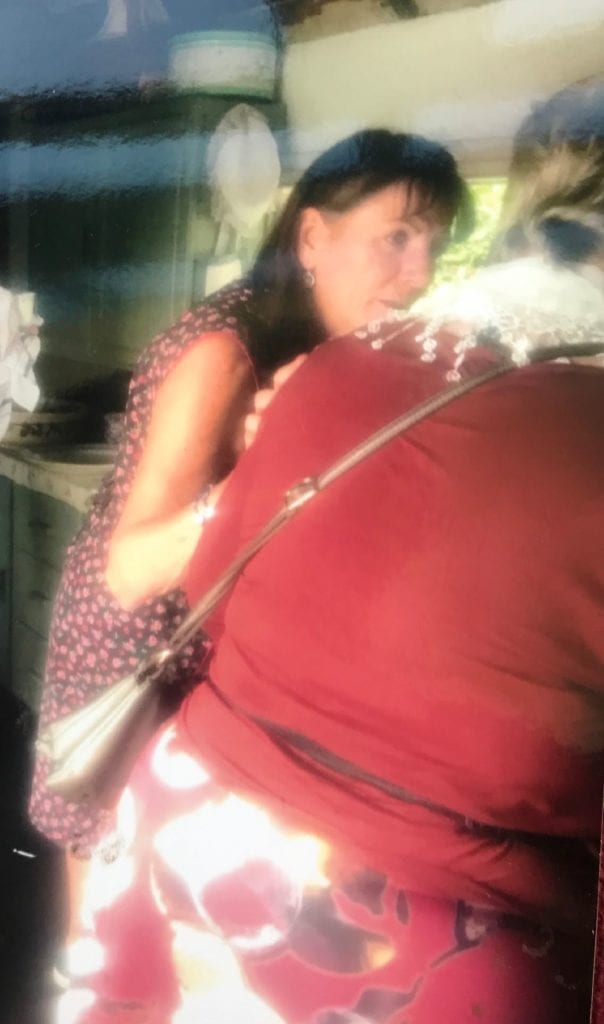
Photo reference for “Tea or Coffee” 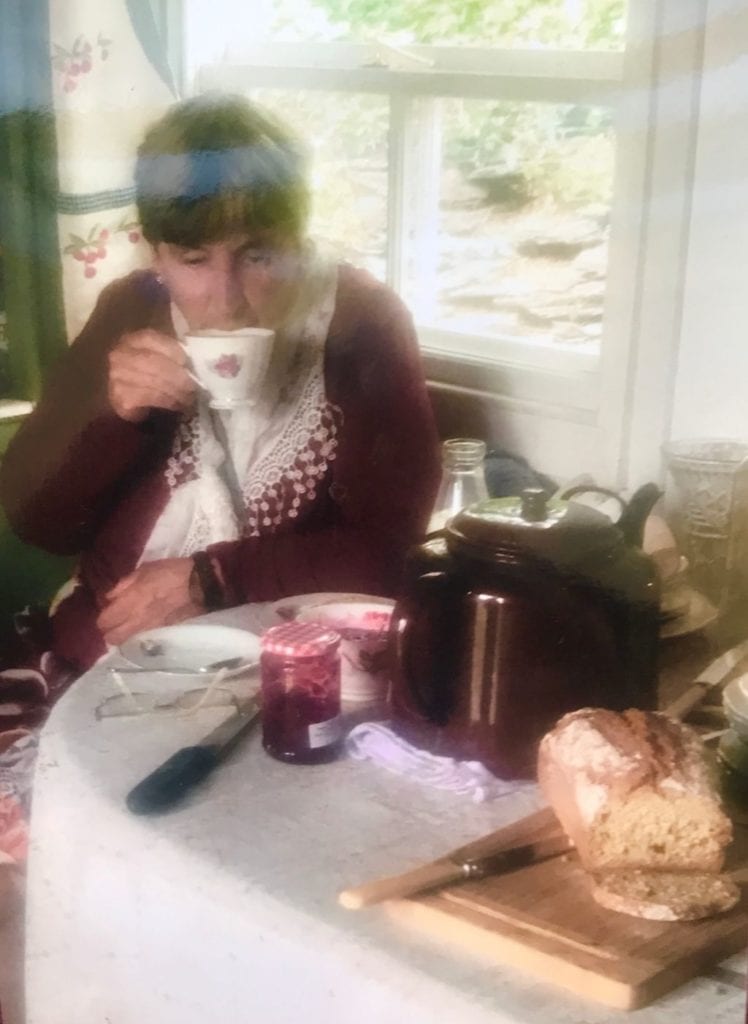
Photo reference for “Tea or Coffee” 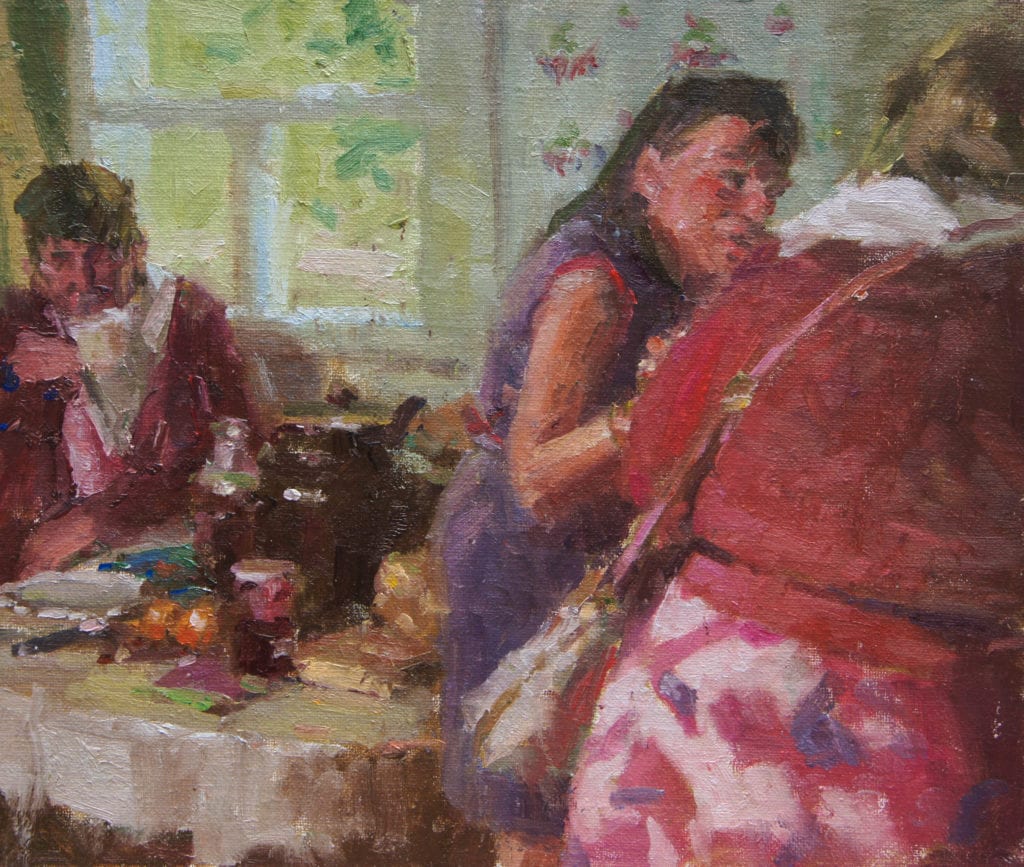
“Tea or Coffee” Color study
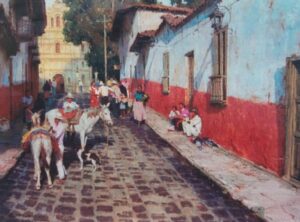
One of my best paintings, a complicated street scene with figures and animals, took me almost a year before I figured out how to get it to work. This street scene is what I finally came up with. The creative process really works in strange, but often wondrous ways for us!
You may have already found what works best for you. But if you haven’t, you might consider doing some smaller value studies to work out designs and compositions. Also, read some good books that talk about that and try and look at great paintings in all styles to figure out why they are so good. Some of it may be very relevant to what you are doing and often you can bet that the artist went through a process of doing value and/or color studies to make it better.
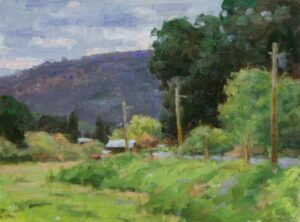
Plein Air
I have a Facebook group where I have demonstrations and videos of my processes including portraits, figures, studio, and plein air landscapes along with explanations of demos and references I use and why and how I put them together. I have been teaching for over 50 years and painting for 75 years and so have a lot of experience, knowledge and some wisdom to share. I am also a “Designated Master” with both the Oil Painters of America and the American Impressionist Society and I love to share my process with others. You can go to this link: Ned’s Artist Buddies or go to my website at www.nedmueller.com and click on works and then Artist Buddies. It is a very good deal! Thanks for getting this far and best of luck to you in this great adventure of creating art!
Leave a Reply